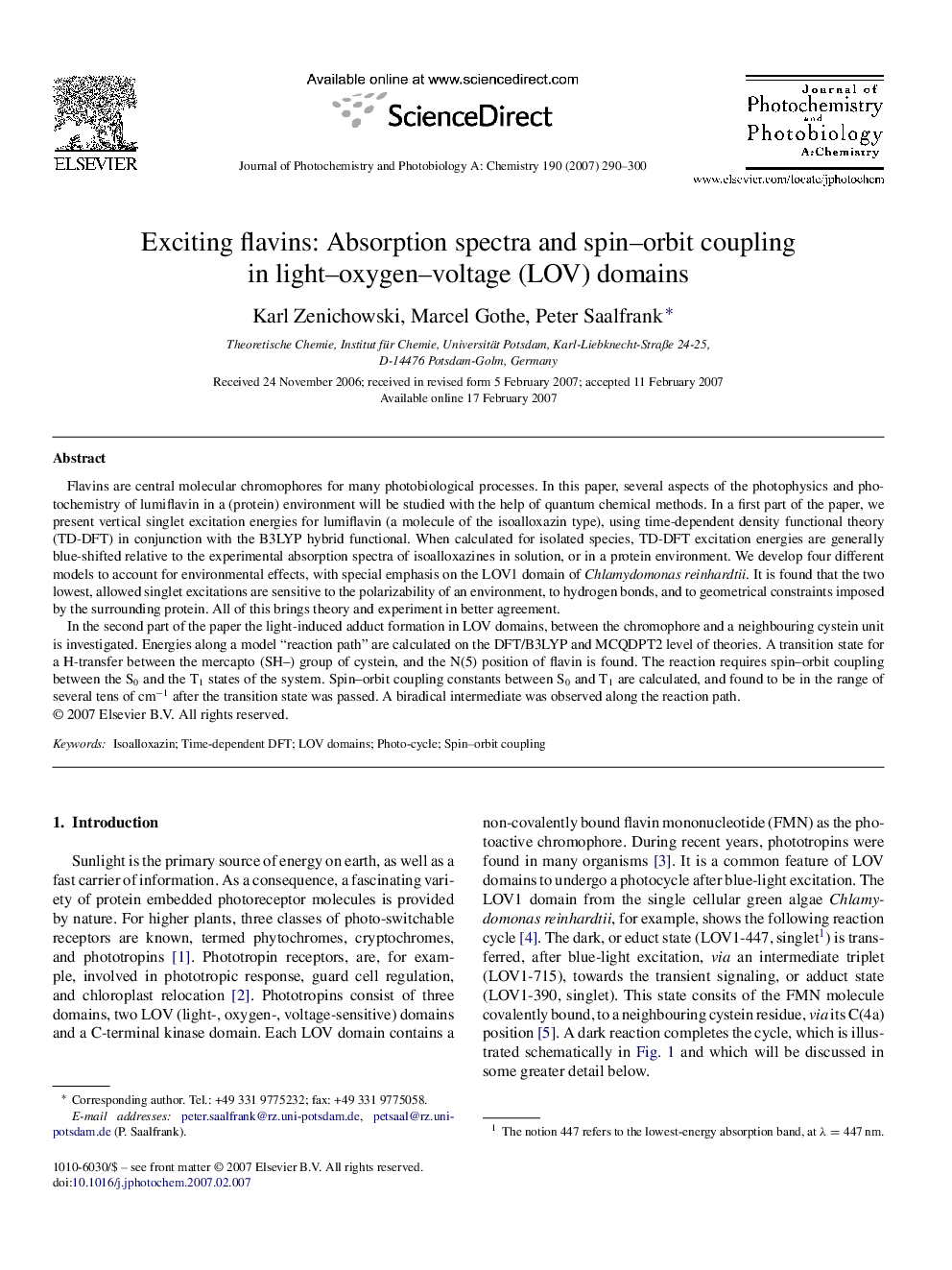| کد مقاله | کد نشریه | سال انتشار | مقاله انگلیسی | نسخه تمام متن |
|---|---|---|---|---|
| 28094 | 44059 | 2007 | 11 صفحه PDF | دانلود رایگان |

Flavins are central molecular chromophores for many photobiological processes. In this paper, several aspects of the photophysics and photochemistry of lumiflavin in a (protein) environment will be studied with the help of quantum chemical methods. In a first part of the paper, we present vertical singlet excitation energies for lumiflavin (a molecule of the isoalloxazin type), using time-dependent density functional theory (TD-DFT) in conjunction with the B3LYP hybrid functional. When calculated for isolated species, TD-DFT excitation energies are generally blue-shifted relative to the experimental absorption spectra of isoalloxazines in solution, or in a protein environment. We develop four different models to account for environmental effects, with special emphasis on the LOV1 domain of Chlamydomonas reinhardtii. It is found that the two lowest, allowed singlet excitations are sensitive to the polarizability of an environment, to hydrogen bonds, and to geometrical constraints imposed by the surrounding protein. All of this brings theory and experiment in better agreement.In the second part of the paper the light-induced adduct formation in LOV domains, between the chromophore and a neighbouring cystein unit is investigated. Energies along a model “reaction path” are calculated on the DFT/B3LYP and MCQDPT2 level of theories. A transition state for a H-transfer between the mercapto (SH–) group of cystein, and the N(5) position of flavin is found. The reaction requires spin–orbit coupling between the S0 and the T1 states of the system. Spin–orbit coupling constants between S0 and T1 are calculated, and found to be in the range of several tens of cm−1 after the transition state was passed. A biradical intermediate was observed along the reaction path.
Journal: Journal of Photochemistry and Photobiology A: Chemistry - Volume 190, Issues 2–3, 15 August 2007, Pages 290–300